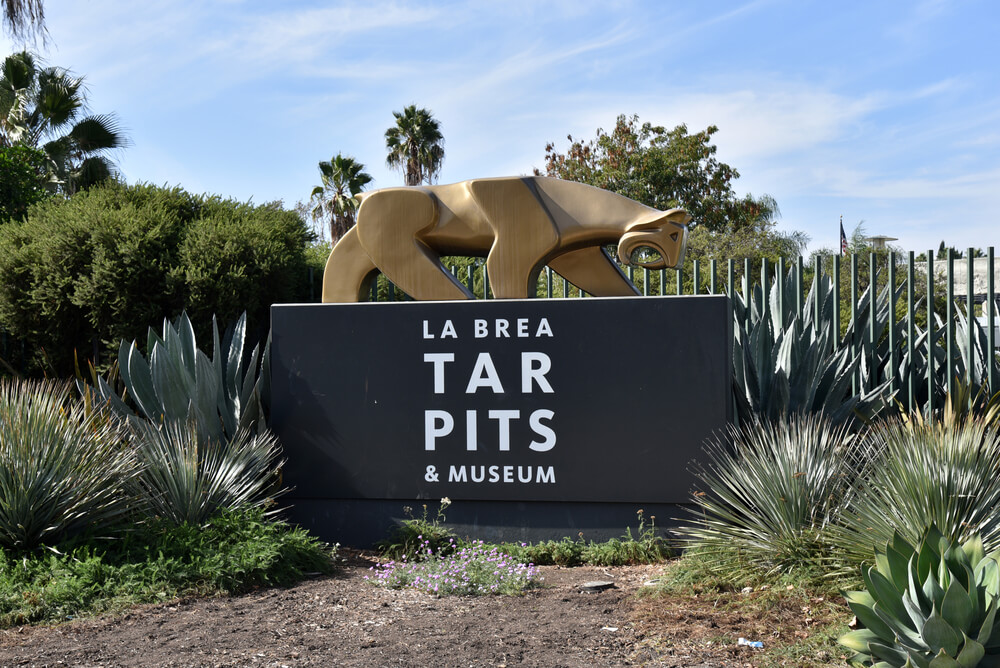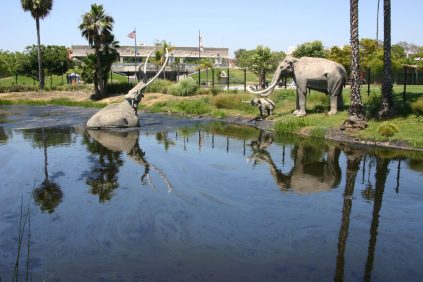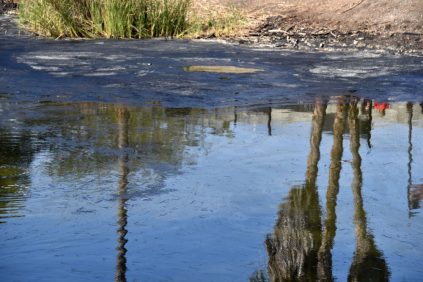La Brea Tar Pits
Located in urban Los Angeles, the La Brea Tar Pits are tar pits around Hancock Park. It has been tens of thousands of years since natural asphalt (also known as asphalt or bitumen, pitch, or tar; in Spanish, brea) has crept up from the earth in this area. Dust, leaves, and water are frequently used to hide the tar. In addition, it kept the bones of caught animals in tar for many decades.
Oil seeps from the ground into tar pits made of heavy oil fractions known as gilsonite. Crude oil flows up through the 6th Street Fault into Hancock Park from the Salt Lake Oil Field, the underlying part of the Fairfax District, to the park’s north.

After reaching the surface and forming pools of oil, the lighter parts of the petroleum biodegrade or evaporate, causing the asphalt to harden and solidify. Typically, the asphalt hardens into stubby mounds due to the process. Multiple locations throughout the park have pools and mounds.
One hundred sites were excavated between 1913 and 1915, searching for large mammal bones. The tar pits that can be seen today were all created by humans: the lake pit was originally an asphalt mine, and the other visible pits were created as a result of explorers excavating more than 100 sites between 1913 and 1915 in search of large mammal bones. These excavations have progressively filled in over time because of an accumulation of asphalt, dust, leaves, and water, yet the tar pits they created remain.
Since the beginning of recorded history, this seepage has occurred regularly, resulting in a layer of asphalt thick enough to imprison animals. Eventually, water, dust, and leaves would accumulate on the deposit.
It was common for animals to wander into the building in the Los Angeles, CA area, and become trapped, eventually dying. Animals would be confined, and predators would draw in to eat them. Predators would get trapped as well. Asphalt seeps through the bones of a dead animal as they sink, turning them a dark brown or black color as the asphalt absorbs the moisture.
Lighter petroleum fractions evaporate from the asphalt, leaving behind a more solid substance that encases the bones and acts as a protective barrier. Extraction of massive animal fossils has revealed that asphalt also contains microfossils such as wood and plant fragments, rodent bones, insects, mollusks, dust, seeds, leaves, and even pollen grains, which have been; discovered in the asphalt.
Image Gallery





Other Nearby Attractions
Information Courtesy:
Restoration Champ of Los Angeles
Universal Studios Hollywood
Universal Studios Hollywood is a popular destination for tourists and residents alike, a film studio and theme park located in the San Fernando Valley near Los Angeles County, California. About 70% of the studio is on the unincorporated county island known as Universal City, with the remaining 30% located within Los Angeles, California.
Read More
Map Views

